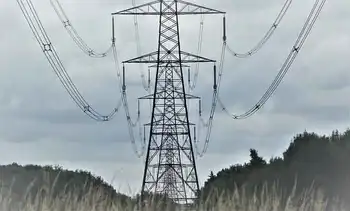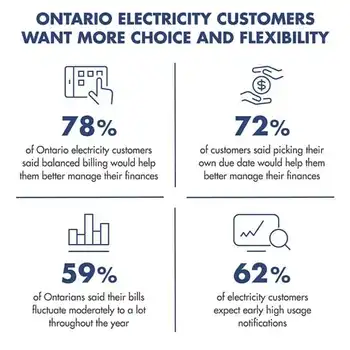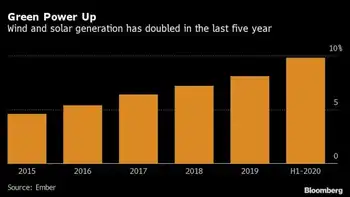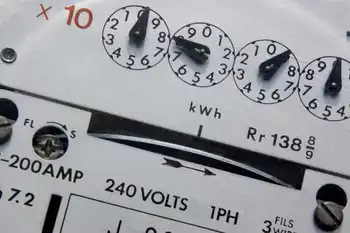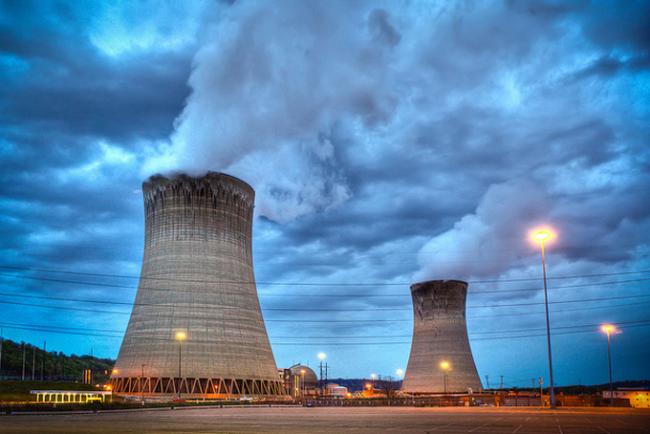NV Energy relying on ecofriendly power
By Las Vegas Review-Journal
Protective Relay Training - Basic
Our customized live online or in‑person group training can be delivered to your staff at your location.

- Live Online
- 12 hours Instructor-led
- Group Training Available
When NV Energy files its three-year integrated resource plan with the Nevada Public Utilities Commission, its proposal will feature $500 million for a green-energy transmission line, $325 million for efficiency and conservation and $100 million for solar-power arrays.
But it won't include any requests for funds to build projects that generate power from fossil fuels such as coal and natural gas.
It's the first mid-range agenda without carbon-fueled capital improvements since 2003, when NV Energy launched an aggressive initiative to buy and develop its own generating stations in Nevada.
NV Energy spent $1.5 billion in recent years acquiring and building power stations so the company could avoid the whims of pricey wholesale markets.
The strategy means the company will get 77 percent of its power through its own plants in 2009, up from 39 percent in 2005.
Michael Yackira, NV Energy's chief executive officer, said he didn't anticipate any need for new fossil fuel-fired plants or additions before 2015.
"We have made great inroads making Nevada energy-independent," Yackira said. "Now, we're going to be looking for ways to reduce (power) use in a cost-effective way."
The company will refine its green portfolio in a series of expenses it will look to recover in future general rate cases.
The integrated resource plan NV Energy will file with the Public Utilities Commission will include $500 million for the One Nevada Transmission Line, or ONLine. The 235-mile network could link Southern Nevada to an initial 600 megawatts of renewable energy generated in Northern Nevada.
The transmission line, which should have an eventual carrying capacity of 2,000 megawatts, also would connect NV Energy's subsidiaries in Reno and Las Vegas, for improved operating efficiencies statewide.
Plus, ONLine would make for competitive prices on solar power in Southern Nevada, because it would bring geothermal energy from up north to the Las Vegas Valley to compete for a share of electricity generation.
The resource plan also reserves $325 million for efforts to boost energy efficiency and conservation.
Those funds will cover energy audits and rebates for small-scale residential photovoltaic systems, compact fluorescent light bulbs and other green technologies.
Consumers might balk at the notion that they will lower their power bills through conservation, only to see the electric utility seek higher rates later to subsidize ecoconscious measures.
But Yackira pointed to big long-term savings from conservation initiatives.
Efficiency efforts cost less than 5 cents per kilowatt hour, while purchasing or producing power costs 12 cents per kilowatt hour. So, swapping out fresh power purchases for conservation should yield savings of 7 cents per kilowatt hour for consumers.
NV Energy also will reveal plans to spend $100 million building photovoltaic plants to capture solar power.
Three plants in Southern Nevada will provide 56 megawatts of solar power. It should take four to five months to build the plants, once state officials approve the proposals.
The final significant chunk of money in the integrated resource plan is $85 million for assorted transmission projects.
NV Energy, which just wrapped up a general rate case that yielded a 6.9 percent increase in the average consumer's power bill, must file an integrated resource plan every three years.
The filing provides a shorter-term action plan on a 20-year strategy.
Yackira said the utility will seek to recover some of the costs of the projects included in Wednesday's filing, but he said it's too early to determine how much of those expenses might appear in the next general rate case.
That rate case is scheduled to be heard in 2012.
The 2012 case is also likely to include some of the capital improvements and expenses the Public Utilities Commission disallowed in the most recent rate case, Yackira said.





